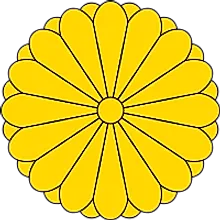Katakana
This is the most important holiday in Japan. While only January 1 is designated as a national holiday, many businesses remain closed through January 3.
New Year (shougatsu) 正月
Beer
ビール
The native religion of Japan
Shintoism, or Shinto
お前はもう、死んでいる!
You are already dead!
Sushi used to be eaten as street food.
True! They were also bigger.
The opposite of Valentine's Day: Men give cakes or chocolates to women. March 14
White day
Desk
デスク
Traditional Japanese gate most commonly found at the entrance of or within a Shinto shrine, where it symbolically marks the transition from the mundane to the sacred and a spot where kami are welcomed and thought to travel through
Torii (鳥居)
そうですか
"Is that so?"
You can get pufferfish sashimi in Japan
True! I don't recommend it though, doesn't taste good.
An autumn festival in Japan celebrating the Harvest Moon. The kanji literally means “Moon Viewing”. It was on Sep 29, and was also an event hosted by JCA. McDonalds does a special menu for the holiday.
Otsukimi (月見 )
personal computer
パソコン
The national flower of Japan
Cherry Blossom (桜)
その赤い本はいくらですか?
How much is that red book?
There is 1 vending machine for every 50 people.
False! Incredibly, there is about 1 vending machine per 31 people.
Also known as the "star festival", takes place on the 7th day of the 7th month of the year, when, according to a Chinese legend, the two stars Altair and Vega, which are usually separated from each other by the Milky Way, are able to meet. People hang wishes on bamboo plants
Tanabata (七夕)
hotel
ホテル
The national dish of Japan.
カレーライスより寿司のほうが好きです。
I like sushi more than curry rice
You can only find Torii on Japanese land.
False! The most notable example is the floating torii at Itsukushima Shrine, located on Miyajima Island. It is also a UNESCO World Heritage Site.
Annual Buddhist event for commemorating one's ancestors, whose spirits are believed to temporarily return to this world in order to visit their relatives during this week. Usually from August 13 to 16. Lanterns are hung in front of houses to guide spirits, and the lanterns are put into rivers, lakes, and the ocean to guide them back.
Obon
apartment
マンション
The Imperial Seal of Japan is called this.
Chrysanthemum Seal. It is an orange or yellow chrysanthemum with red or black outlines, with 16 fron petals surrounding a center disk and 16 rear petals half staggered and only visible at the flower's edge. 
日本語は上手ですね~
The most dreaded sentence for any Japanese learner to hear from a native speaker. It's meaning is hard to grasp and quite nuanced as it stems from the Japanese disposition to praise the other party even when it is clear that their nihongo is not very jouzu. In fact, it is said more often when you Japanese is clearly not jouzu, rather than when you are actually jouzu. Therefore, while technically a compliment, many feel as though it is a reminder that they have yet to acheive true fluency, because the listener will sneak in a nihongo jouzu at the slightest chance, while true fluent speakers of Japanese will be so good that they don't even notice they are not speaking to a Japanese person.
The oldest company in the world is in Japan.
True! Kongo Gumi is the oldest operating business in the world, established in 578. It specializes in the construction of temples and shrines